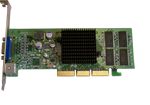'ZDNET Recommends': What exactly does it mean?
ZDNET's recommendations are based on many hours of testing, research, and comparison shopping. We gather data from the best available sources, including vendor and retailer listings as well as other relevant and independent reviews sites. And we pore over customer reviews to find out what matters to real people who already own and use the products and services we’re assessing.
When you click through from our site to a retailer and buy a product or service, we may earn affiliate commissions. This helps support our work, but does not affect what we cover or how, and it does not affect the price you pay. Neither ZDNET nor the author are compensated for these independent reviews. Indeed, we follow strict guidelines that ensure our editorial content is never influenced by advertisers.
ZDNET's editorial team writes on behalf of you, our reader. Our goal is to deliver the most accurate information and the most knowledgeable advice possible in order to help you make smarter buying decisions on tech gear and a wide array of products and services. Our editors thoroughly review and fact-check every article to ensure that our content meets the highest standards. If we have made an error or published misleading information, we will correct or clarify the article. If you see inaccuracies in our content, please report the mistake via this form.
VisionTek Xtasy GeForce4 MX 420


VisionTek Xtasy GeForce4 MX 420
pros and cons
- Low price TV-out as separate display.
- Slowest GeForce4 card single VGA output.
If you need a better graphics card, but don't want to pay through the nose for the leading-edge products, you can still get some new technology in the shape of the Xtasy GeForce4 MX 420. VisionTek has produced a card that speeds up graphics and allows you to watch DVD movies on a TV while keeping the cost down to a reasonable level.
VisionTek is one of the first manufacturers to get a GeForce4-based card out into the market. The Xtasy GeForce4 MX 420 is a mainstream adapter that has much lower performance than the fastest GeForce4 cards -- and some GeForce3 cards -- but also costs considerably less. If you haven't upgraded your graphics card for a while, and want to do so at minimum cost, the Xtasy GeForce4 MX 420 should be high on your hit-list.
The nVidia GeForce4 MX 420 chip used in this card has a 350MHz RAMDAC, a core speed of 250MHz and a memory clock of 166MHz -- it uses SDRAM rather than the fster DDR RAM of more expensive products. These numbers explain some of the difference in performance between the MX 420 part and the leading-edge Ti 4600 chip -- the latter has a 20 per cent faster core, and memory running at nearly four times the speed. More relevant to the MX 420 card's reduced performance is its two-pipeline architecture compared to the quad-piped design of the GeForce3 and GeForce4 Ti. With a 3DMark2001 score of 3,990, this card is actually slower than some GeForce3 Ti-based cards we've reviewed in the past. Finally, the MX 420 chip's hardware pixel and vertex shaders are not programmable like the Ti 4600's.
The MX 420 does have the new Accuview anti-aliasing engine built in. This is dedicated anti-aliasing hardware, which is supposed to minimise the performance impact of having anti-aliasing turned on. However, our tests show that the anti-aliasing performance is similarly poor compared to other GeForce4 cards. Turning on 2x anti-aliasing cuts the 3DMark 2001 result by nearly 50 per cent. Switching to 4x anti-aliasing nearly halves the performance again.
The Xtasy GeForce4 MX 420 has an S-Video output, allowing you to use suitably equipped TVs (or video recorders) with your PC. You get nView - nVidia's multi-monitor technology -- in the GeForce4, so you can run your monitor and TV as separate displays. This allows you to have the movie full-screen on the TV while having the controls on the monitor. You could have one person watching a movie and another working on the PC -- providing your system is up to the job. You can also run your desktop at a different resolution to the TV, so that you don't have to keep changing resolution when you want to watch a movie.
The Xtasy GF4 MX 420 is quite slow for a brand-new graphics card, although it's an improvement compared with cards from as little as a year ago. However, it's the low cost that is most compelling: if your games collection doesn't include the very latest titles, or you're not interested in outstanding image quality, a card such as this will deliver a boost without breaking the bank.